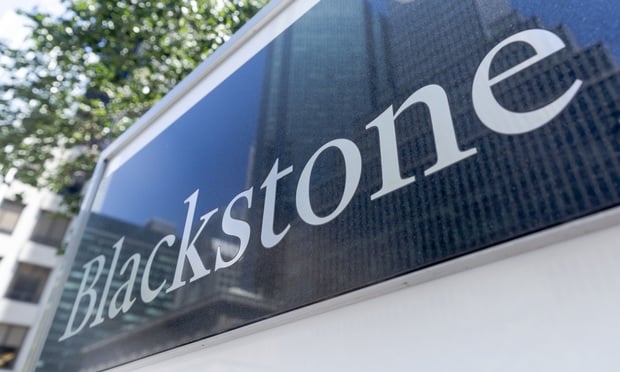
NEW YORK CITY—While the city's economy bounced back quickly from the Great Recession, the majority of the jobs created during the recovery are low wage industry sectors that have posted little or no salary growth.
The report issued by New York State Comptroller Scott M. Stringer chronicled mostly positive economic data that showed New York City fared much better than the rest of the nation in terms of climbing out of the Great Recession that devastated the U.S. economy from December 2007-June 2009. The report indicated that the city's recession was shorter and shallower than the dramatic economic downturn that was so devastating to most of the nation.
According to the report, New York City lost fewer jobs and recovered faster than the country at large. It took New York City just three years to recover the jobs it had lost during the Great Recession as compared to six years for the United States as a whole. The Stringer report states that New York City lost 100,100 jobs between the pre-recession high in 2008 and the 2009 low—a decrease of 2.6%. The United States lost 7.6 million jobs from 2007 through 2010, a drop of 5.5%.
From 2009 to 2016, New York City added 629,500 jobs—a gain of 17%. From the city's pre-recession high in 2008 to 2016, New York City gained 529,400 jobs, a boost of 14%. Between 2010 and 2016, the United States gained 13.9 million jobs, for an increase of 10.7% Overall, between the pre-recession peak of 2007 and 2016, the United States gained 6.3 million jobs—which represented 4.6% employment growth.
“New York City must continue to lead economically, socially, and culturally. What this first-of-its-kind report shows is that our bounce-back was faster and more robust than the rest of the country. We obviously have big challenges—an affordability crisis, rising income inequality, and more. But this in-depth look demonstrates that New York City is thriving in a way that other cities and states aren't,” New York City Comptroller Stringer said.
However, he did cite troubling statistics that indicate much of the city's employment growth since the end of the Great Recession has been in low paying jobs sectors and also part-time positions. “We're also facing unprecedented threats from Washington and an unstable political climate. We have to be vigilant if we're going to keep New York City on top in this century—and the next,” he added.
More than half of all jobs lost in New York City during the Great Recession—54,000 out of 103,000, or roughly 53%—were in high-wage industries, which paid an average of $187,000 per year in 2015, according to the report.
During the subsequent economic recovery, only 22.7% of the new jobs created were in high-wage industries. The majority, 359,000 jobs, or 55.7% of those created, were in lower-wage industries, which pay, on average, $42,000 a year. The report stated that between the pre-recession peak in 2008 and in 2016, jobs in low-wage industries accounted for 61.5% of all the new private-sector jobs created in New York City.
The results of the Stringer report back up a new initiative—“New York Works” launched by New York City Mayor Bill de Blasio that looks to create 100,000 jobs in the next 10 years that pay more than $50,000 in the city.
Other key takeaways from the City Comptroller's report were:
• Adjusting for inflation, low-wage industries haven't seen any wage growth between the beginning of the recovery in 2009 and 2015. Medium-wage jobs have seen wages grow 7.4% on average and the high-wage sector has enjoyed 9.3% average wage growth.
• Before the recession in 2008, commuters held roughly 813,000 jobs. After the recession, in 2015, commuters held 899,000 jobs in New York City.
• The industries with high concentrations of commuters: financial activities (35%), information (31%), government (26%), construction (26%), and professional and business services (26%)—had average salaries of $124,000.
• Industries with high concentrations of New York City residents, such as education and health services (84%), wholesale and retail trade (84%), other services (87%), and leisure and hospitality (89%)—had average salaries of $49,000.
• In 2007, prior to the recession, New York City's unemployment rate was 5%. It reached a high of 9.5% in 2010, and fell to 5.2% in 2016. As of March 2017, New York City's unemployment was 4.0%, the lowest rate ever recorded.
• Black New Yorkers—who had an unemployment rate of 7.3% in 2007, the highest in the city—have continued to suffer from high unemployment. As of the first quarter of 2017, the unemployment rate among Black New Yorkers was 7.1%.
• As of 2016, the number of part-time private-sector workers in the city had grown 36,225—up 9% from 2008, before the recession took hold in New York City.
• Certain industries have seen a significant increase in the number of part-time employees from 2008 to 2016, including retail trade (32.5%), bars and restaurants (39.5%), healthcare and social services (9%), professional and business services (15.6%) and information (76.3%).
© 2025 ALM Global, LLC, All Rights Reserved. Request academic re-use from www.copyright.com. All other uses, submit a request to [email protected]. For more information visit Asset & Logo Licensing.








